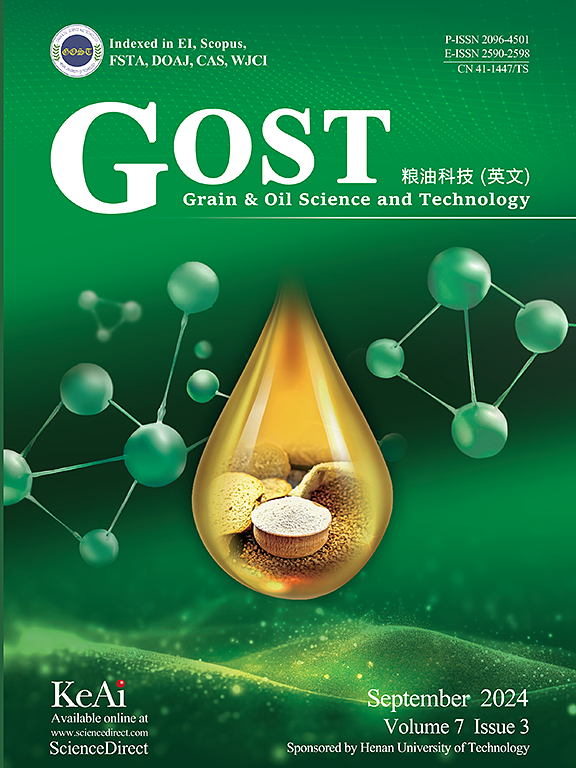Antifungal activity and potential mechanism of paeonol against Fusarium graminearum and the application on wheat grains and steamed bread
Q2 Agricultural and Biological Sciences
引用次数: 0
Abstract
Fusarium graminearum (F. graminearum) is a severe phytopathogen threatening agriculture production and food security. Paeonol, serves as a plant-derived natural component, is a promising antifungal agent. At a concentration of 0.3125 mg/mL, paeonol was adequate to fully inhibit the growth of F. graminearum mycelia within 3 days. Fourier-Transform Infrared Spectroscopy (FT-IR) analysis showed that paeonol had no impact on the outer surface of F. graminearum cell walls. While propidium iodide staining, extracellular conductivity, and pH value measurements demonstrated that paeonol disrupted the cell membrane. Furthermore, lipid oxidation and osmotic stress responses were observed in F. graminearum treated with paeonol, resulting in a 47.23% rise in malondialdehyde (MDA) levels and a 515.43% increase in glycerol levels. Moreover, on the 7th day after exposure to paeonol treatment, the deoxynivalenol (DON) level was significantly reduced, measuring only one-fifth of that in the control group. Finally, paeonol was shown to inhibit F. graminearum on wheat grains and steamed bread slices. These results, for the first time, revealed the inhibitory mode of action of paeonol against F. graminearum as reflected by disruption of cell membrane integrity, induction of lipid oxidation and osmotic pressure, as well as DON biosynthesis. Furthermore, this study provided scientific evidence for the potential applications of paeonol in agriculture and food industry.

丹皮酚对小麦赤霉病菌的抑菌活性、抑菌机理及在小麦和馒头上的应用
谷草镰刀菌是一种严重威胁农业生产和粮食安全的植物致病菌。丹皮酚作为一种植物源性天然成分,是一种很有前途的抗真菌药物。在0.3125 mg/mL浓度下,丹皮酚足以在3天内完全抑制禾粒镰刀菌菌丝的生长。傅里叶变换红外光谱(FT-IR)分析表明,丹皮酚对禾草酵母细胞壁外表面没有影响。而碘化丙啶染色,细胞外电导率和pH值测量表明丹皮酚破坏了细胞膜。此外,丹皮酚处理对禾谷酵母的脂质氧化和渗透胁迫有显著影响,导致丙二醛(MDA)水平升高47.23%,甘油水平升高515.43%。此外,丹皮酚处理后第7天,脱氧雪腐镰刀菌醇(DON)水平显著降低,仅为对照组的五分之一。最后,丹皮酚对小麦和馒头片上的禾粒镰刀菌有抑制作用。这些结果首次揭示了丹皮酚通过破坏细胞膜完整性、诱导脂质氧化和渗透压以及DON生物合成等方式抑制禾谷镰刀菌的作用机制。为丹皮酚在农业和食品工业中的潜在应用提供了科学依据。
本文章由计算机程序翻译,如有差异,请以英文原文为准。
求助全文
约1分钟内获得全文
求助全文
来源期刊

Grain Oil Science and Technology
Food Science
CiteScore
7.30
自引率
0.00%
发文量
69
审稿时长
12 weeks
期刊介绍:
 求助内容:
求助内容: 应助结果提醒方式:
应助结果提醒方式:


